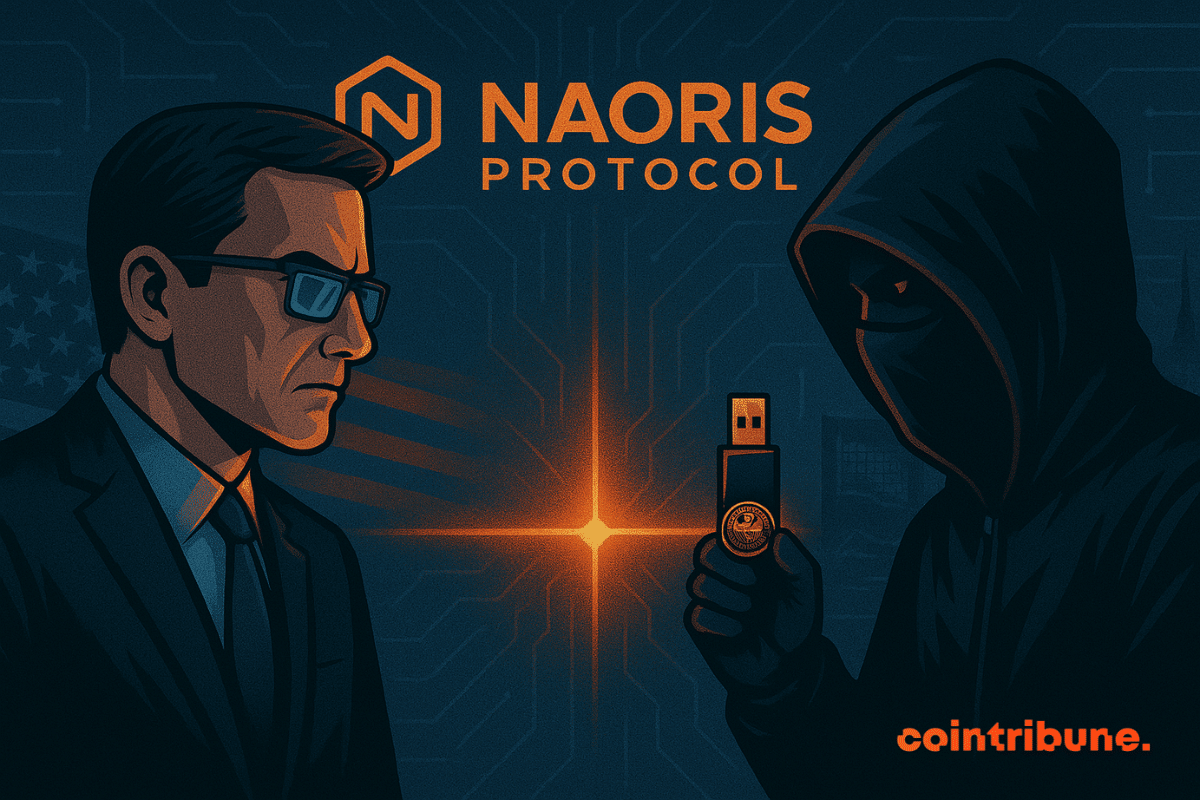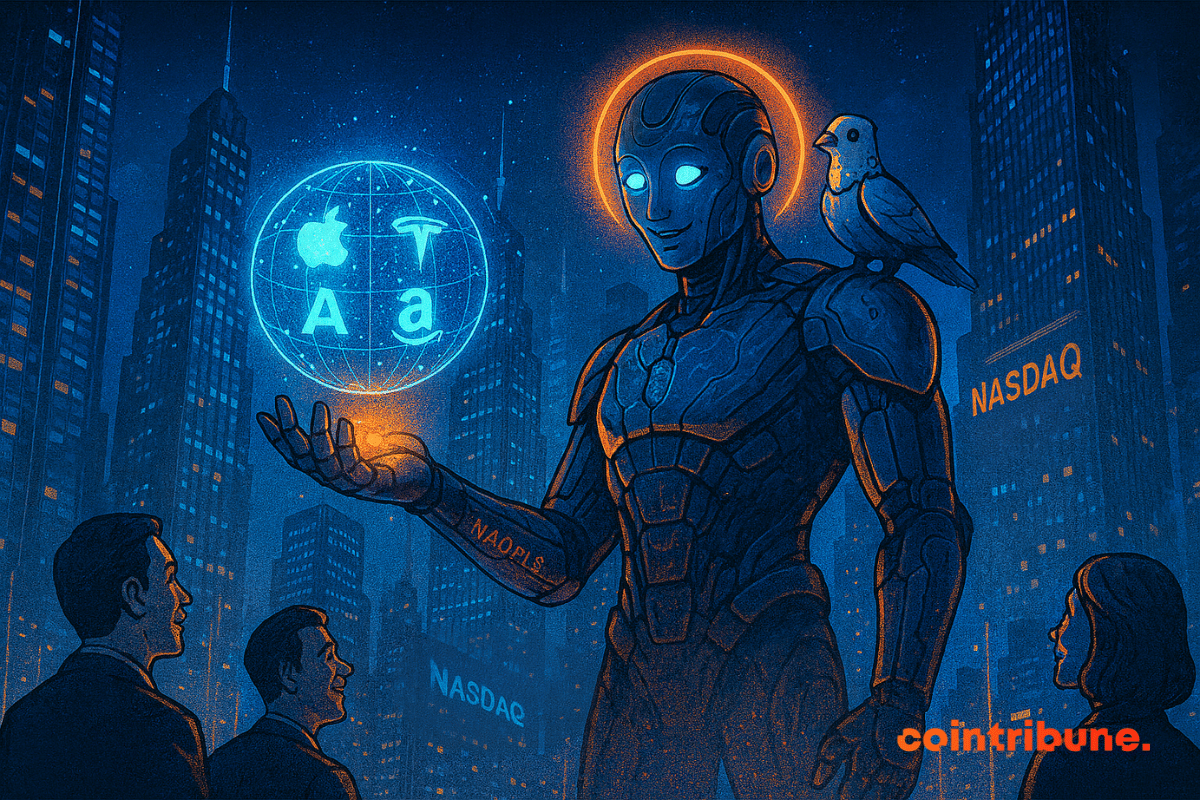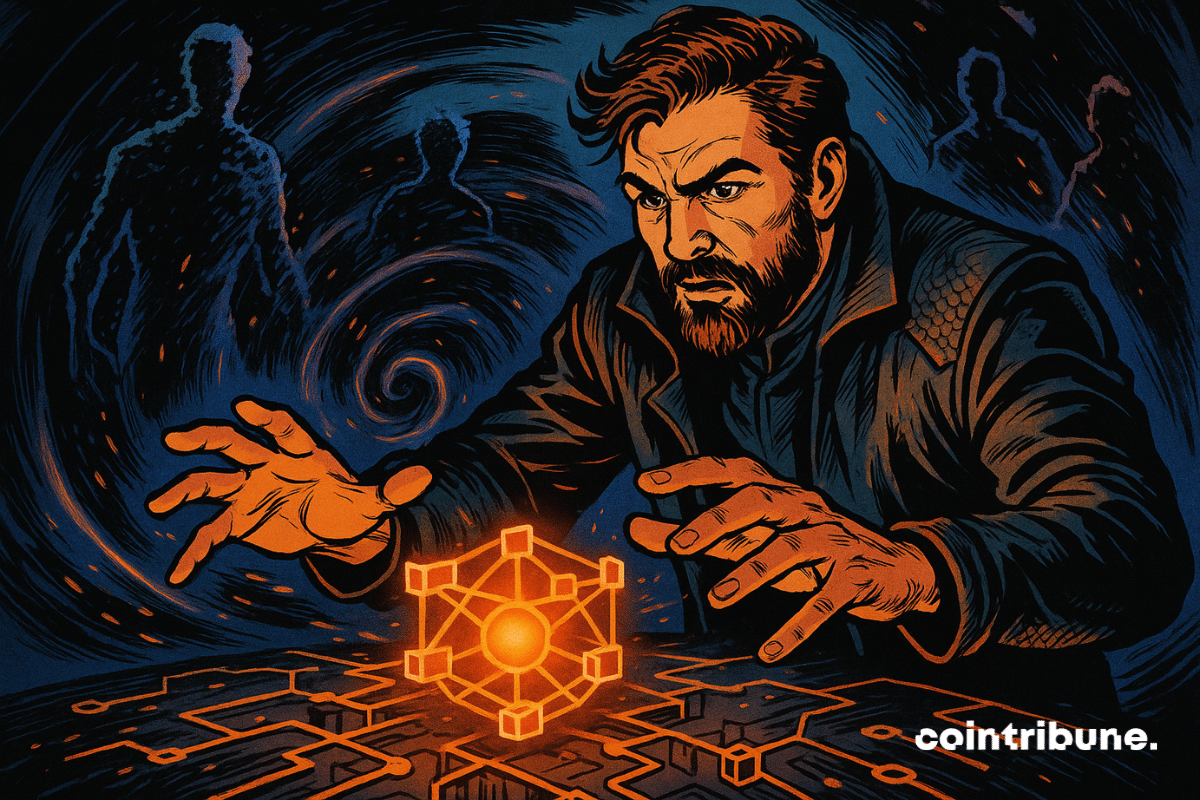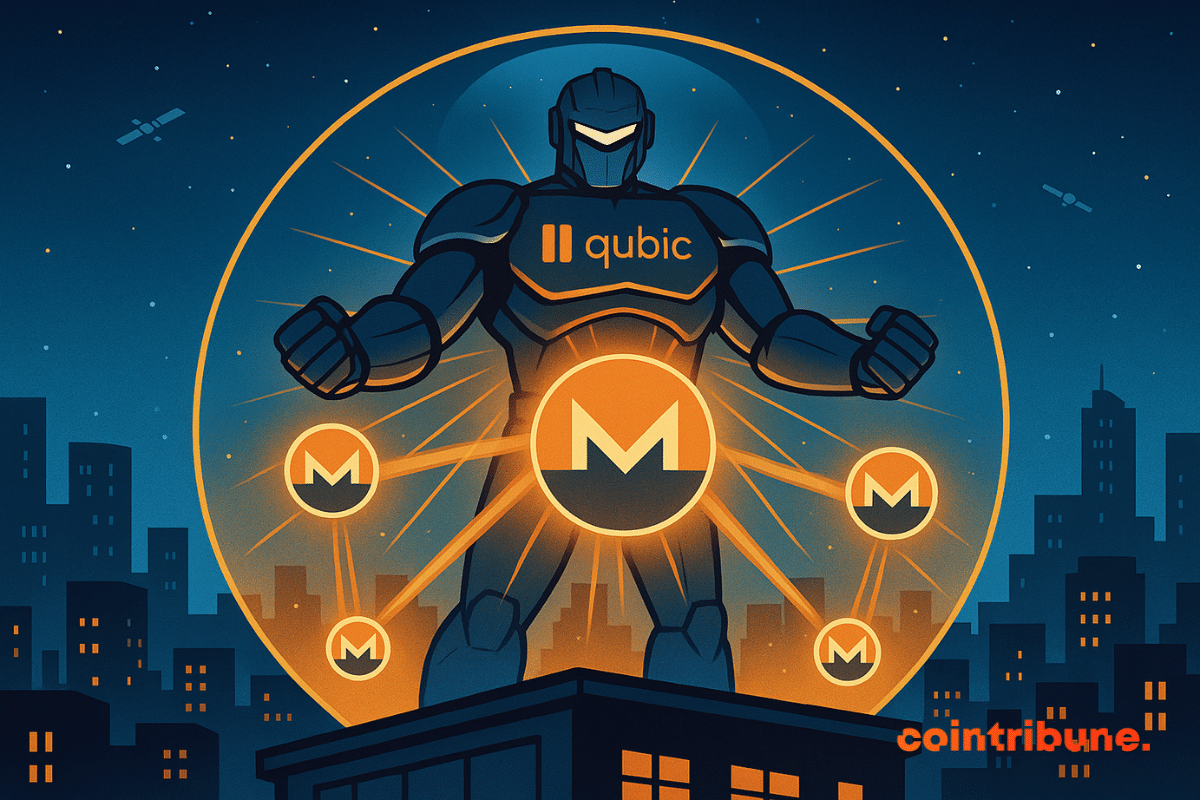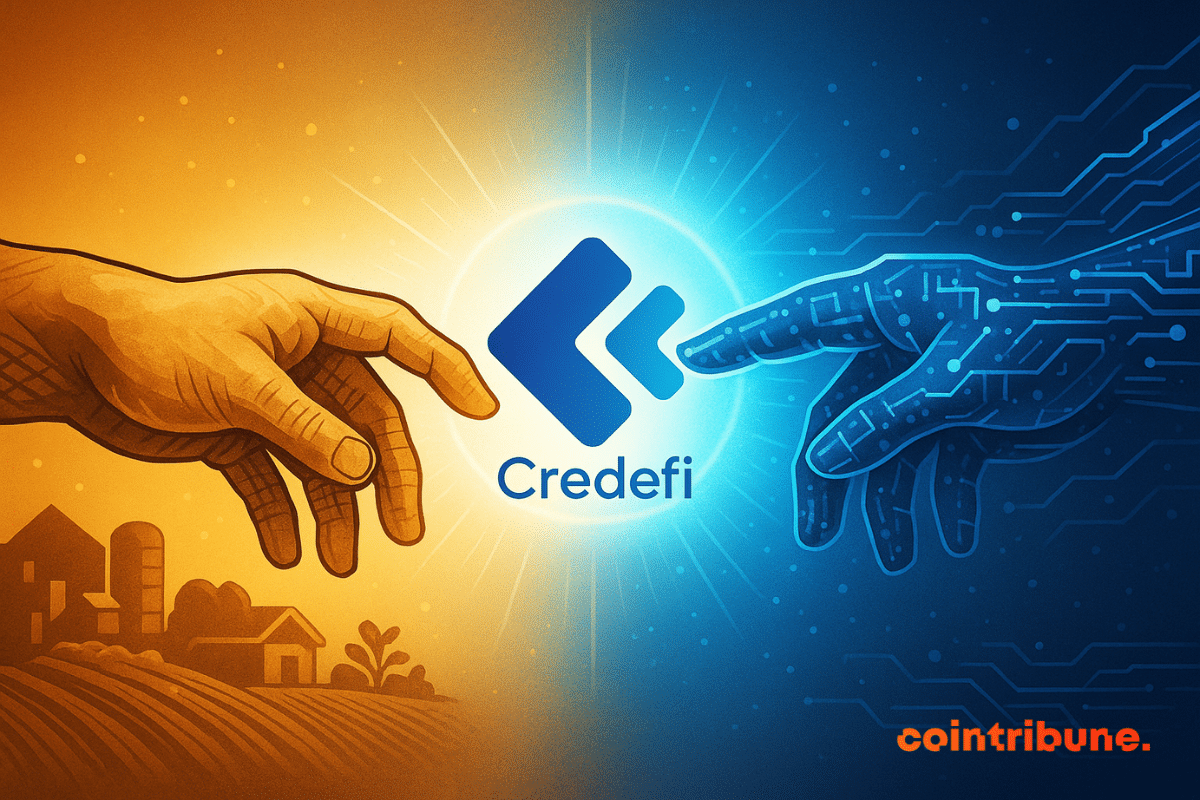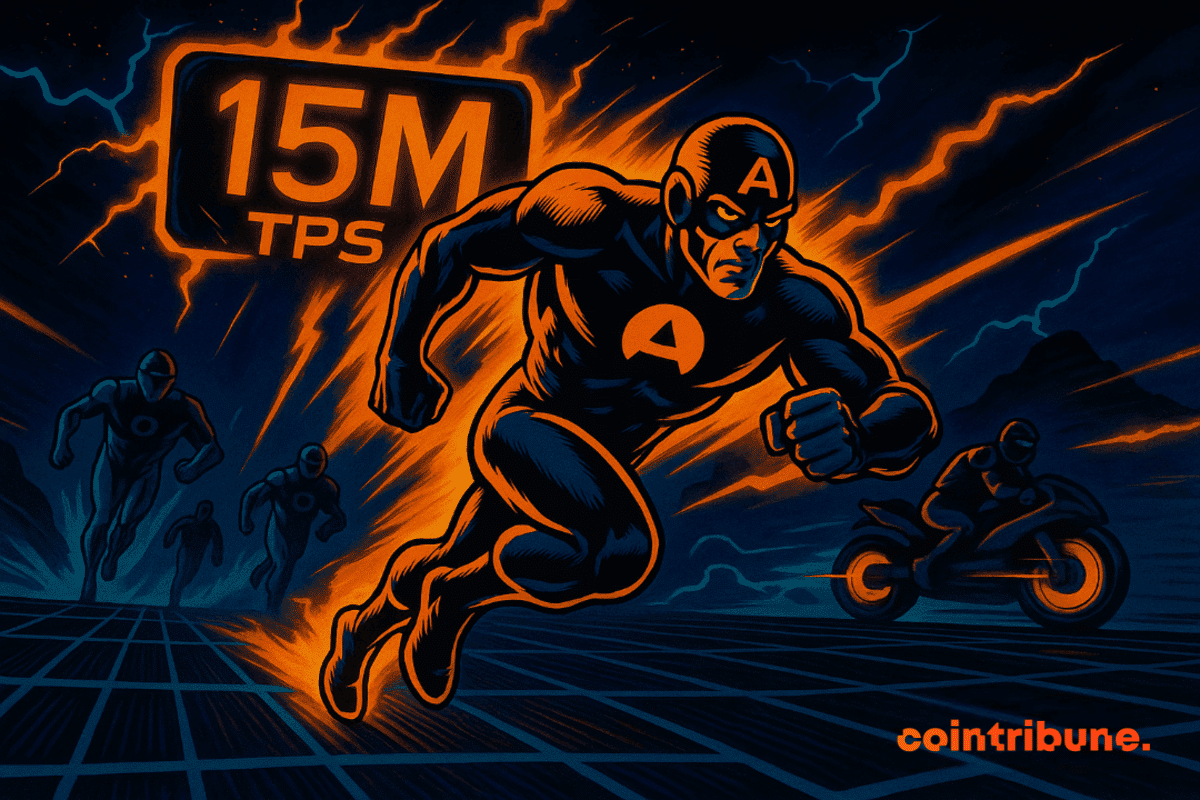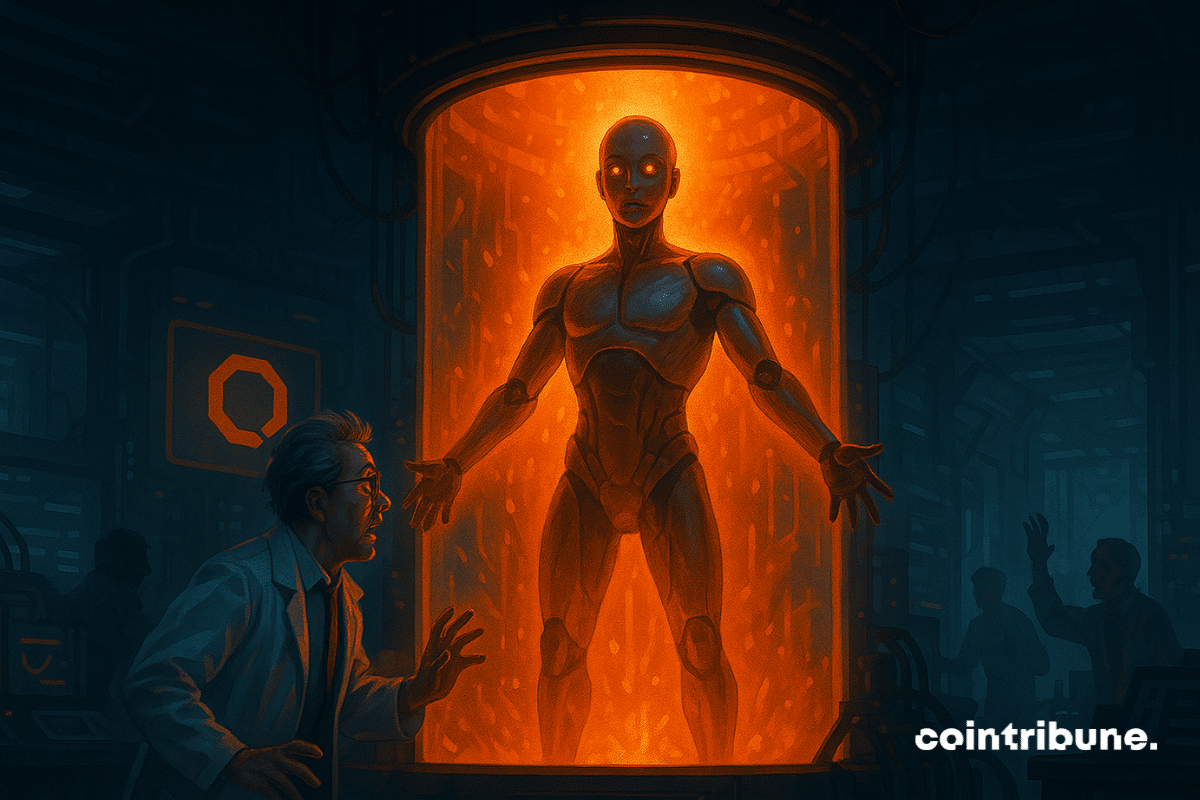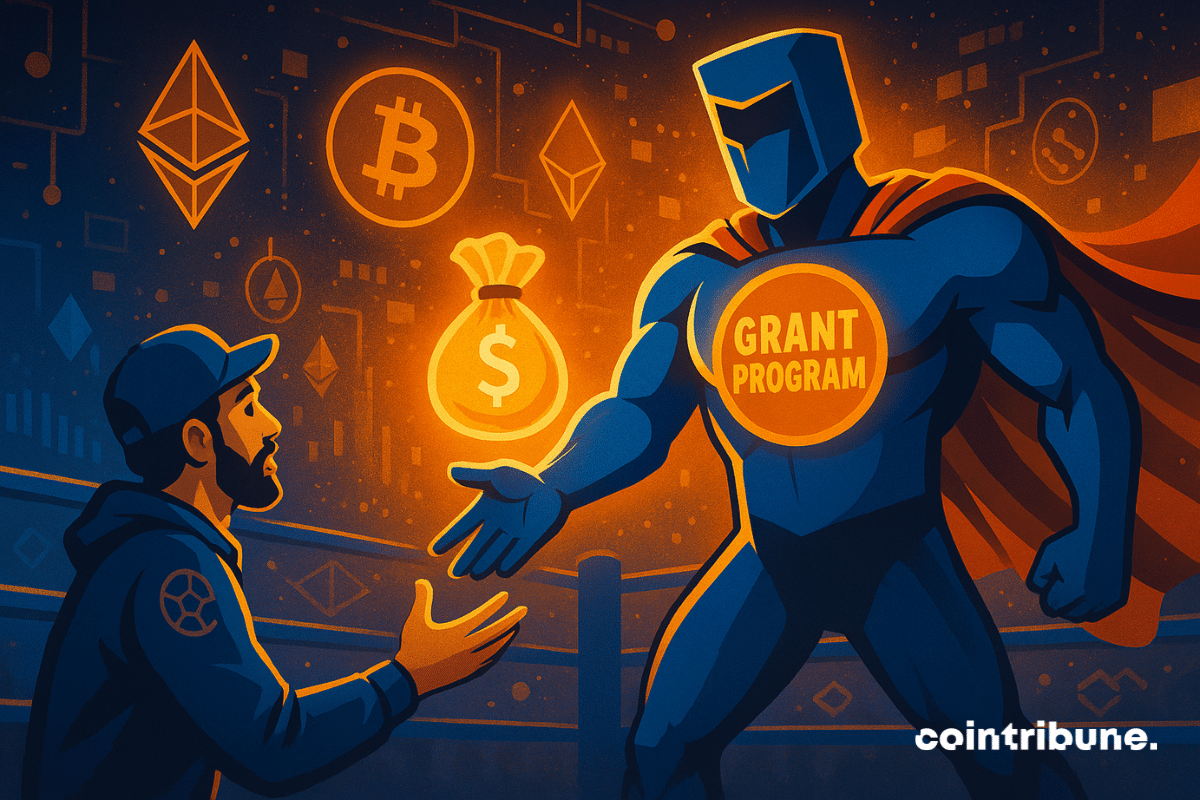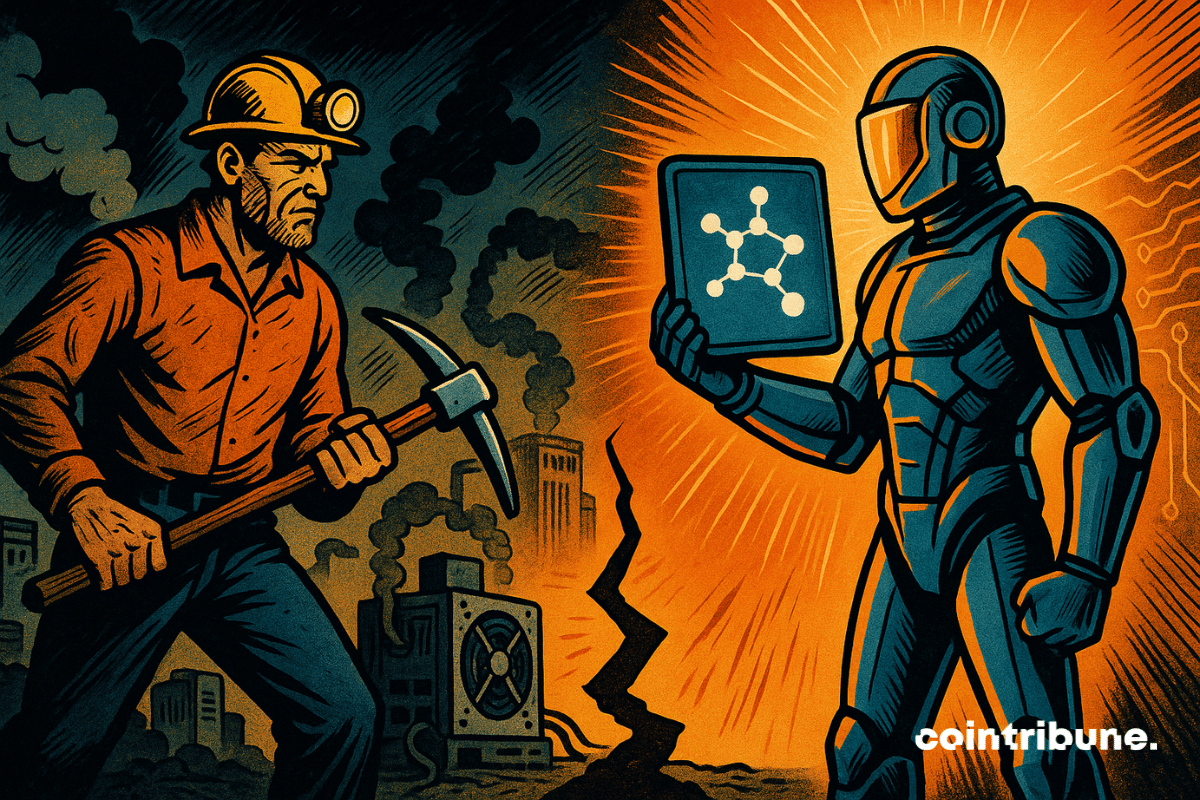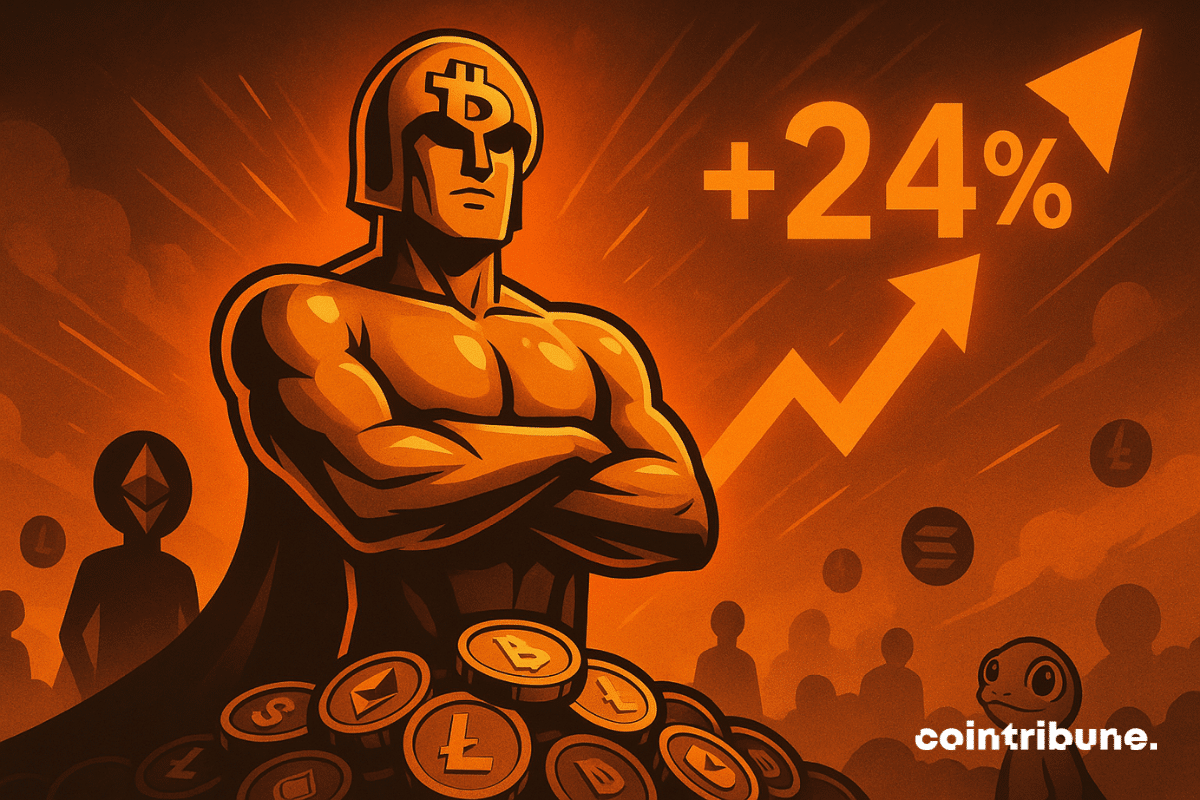The crypto platform Finst officially enters the French market on September 9, 2025, promising to shake up cryptocurrency investing with ultra-competitive rates and a transparent approach. Founded by former DEGIRO executives and regulated by the Dutch Financial Markets Authority (AFM), this Dutch platform aims to democratize access to crypto-assets in France.
Article native advertising
The tokenized real-world asset (RWA) market reaches a new milestone with Ondo Finance's groundbreaking announcement: the deployment of over 100 American stocks and ETFs directly on the Ethereum blockchain. This major initiative propels the ONDO token to new heights, flirting with the symbolic 1 dollar mark.nThe enthusiasm around Ondo Finance signifies a silent revolution redefining access to traditional financial markets. By eliminating intermediaries and offering 24/7 trading, tokenization fundamentally transforms how investors interact with traditional assets.nThis evolution is part of a broader movement where blockchain becomes the new standard for democratizing investment, from real estate with players like RealT to listed stocks with Ondo Finance. A breakdown of a sector that could well disrupt traditional finance.n
American crypto exchange Kraken has completed an ambitious tour of France with 21 stops across the country. Stated objective: move beyond major metropolitan areas to meet users in the regions. This unprecedented initiative reveals a deeper strategy for conquering the French market.
In July 2025, a Microsoft vulnerability exposed over 400 public organizations, including the U.S. agency that manages the nuclear arsenal. Hospitals paralyzed, schools ransomed, and a post-quantum deadline now set: 2025 reminds governments that they won't win the cybersecurity race with late patches and centralized architectures. Faced with this reality, one question emerges: how do we build a truly resilient trust infrastructure?
The financial results published on August 14 by Quantum Computing Inc. (QUBT) perfectly illustrate the current dynamics of the quantum sector. With revenues of $61,000 in the second quarter of 2025 and a gross margin of 43%, the Nasdaq-listed company continues its rise since the completion of its photonic chip foundry in Tempe, Arizona, last March. This industrial reality coincides with NIST's selection of the HQC algorithm on March 11, 2025, the fifth official post-quantum cryptography standard, confirming the urgency of the security transition.
REAL positions itself as the first Layer 1 blockchain specialized in the tokenization of real-world assets (RWA), with business validators integrated into the consensus and over 500 million dollars of assets already in preparation. This unique technical approach could revolutionize the institutional adoption of RWAs.
Crypto is good. Crypto + F1 + guaranteed gifts is better. OKX launches a campaign in Europe with McLaren that transforms your first trade (or referring a friend) into a free/complimentary official McLaren F1 Team cap and, for three lucky winners, into a VIP experience at the Netherlands Grand Prix in Zandvoort (August 29–31, 2025). Goal: to give you a tangible and fun reason to try OKX, with an exclusive gift, frictionless with clear rules.
A silent revolution is taking shape. As quantum computing becomes a reality, the very foundations of Web3 begin to tremble. Behind this invisible threat, a solution emerges: Naoris Protocol. A decentralized post-quantum cybersecurity infrastructure, it anticipates vulnerabilities that even nation-states fear. Its founder, David Carvalho, grants us an exclusive interview. An ethical hacker turned cyber strategist, he shares his vision, his technological choices, and his warnings. As the $NAORIS Token Generation Event (TGE) took place on July 31, 2025, a new paradigm is on the horizon..
Chainlink dominates real-world asset tokenization with major partnerships and growing institutional adoption.
An exceptional technical show of force is currently shaking the crypto ecosystem. Qubic now controls 58% of Monero's (XMR) total hashrate during its marathon periods, setting a new record of computational power while simultaneously proving that technical innovation and responsibility can coexist. This remarkable performance illustrates the unique capabilities of the Qubic network and its revolutionary vision of Useful Proof of Work.
The new generation decentralized wallet from Qubic offers users full control over their digital assets with enhanced security
Credefi launches its groundbreaking Platform 3.0 with xCREDI staking at 34% APY and permissionless RWA lending via Brickken.
On April 22, 2025, Qubic performed a public stress test on its live Layer-1 network and reached the incredible score of 15,520,000 transactions per second (TPS). The whole was independently verified in real-time by CertiK, one of the most respected security auditors in the industry.
Deep learning labs showcase models with a trillion parameters and mountains of GPUs, but each new breakthrough always demands more electricity and money. Qubic's Aigarth project raises a provocative question: what if the road to artificial general intelligence (AGI) did not go through ever larger data centers, but through millions of ordinary CPUs working together and evolving by themselves?
Qubic strives to transform its ultra-fast and fee-less Layer 1 into a dynamic economy of dApps, bridges, and DeFi primitives. But code doesn't write itself, and founders can't live on enthusiasm alone. To accelerate innovation, the project launched two distinct funding paths: one for profit-seeking startups, the other for public-interest infrastructure. Think of them as two parallel lanes on the same highway: both lead to Qubic’s mainnet, but each has a different engine, fuel, and technical team.
How an emerging blockchain reinvented mining, outperforms Monero in profitability, and paves the way for decentralized AI, all explained in simple terms for beginners.
Fifteen years ago, Bitcoin introduced Proof-of-Work (PoW): miners burned electricity solving mathematical puzzles; the fastest won new coins and, by extension, secured the ledger. It was brilliant, but the world has changed. Energy prices are rising, regulators monitor carbon footprints as much as blockchains, and AI labs complain about the lack of affordable computing power. In this context, the original PoW feels a bit like burning fuel to run an empty engine. Qubic offers a simple solution: since the electricity bill is already paid, let’s use that energy for tasks useful to society. The Useful Proof-of-Work (uPoW) still protects the chain, but miners earn their living by training AI models and merge-mining Monero with real value, then directly reinject the earnings into the Qubic economy.
A simple introductory guide to read for anyone curious about Qubic, its Useful Proof of Work, and its on-chain Academy that turns newcomers into seasoned contributors.
While many projects chase ephemeral attention through quick contests, copy-pasted influencer partnerships, or hype-based campaigns, few take the time to build real sustainable community foundations. This is where Qubic breaks the mold. Rather than relying on superficial tactics, Qubic has designed a structured, long-term ambassador program, a true engine of growth, collaboration, and impact. It’s not just about accumulating followers but empowering builders, creators, and leaders to shape the future of decentralized AI.
Global cybersecurity is facing an unprecedented challenge: organizations must simultaneously comply with NIS2, prepare for post-quantum migration (NIST 2030-2035 deadlines), and implement a truly operational zero-trust. This convergence of constraints creates a unique window of opportunity for solutions that solve multiple problems at once.
American Senator Cynthia Lummis officially introduced the 21st Century Mortgage Act, a groundbreaking legislation that would require government-sponsored enterprises to consider digital assets when assessing eligibility for single-family mortgage loans.
Bybit, the world’s second largest crypto exchange by volume, reaches a new milestone in Europe. The platform has just announced the launch of spot margin trading on Bybit.eu, offering European users leverage of up to 10x under a strict regulatory framework.
August 14, 2025 marks a historic milestone for the European crypto ecosystem: XION officially becomes the first Launchpool project on the newly licensed Bybit EU platform under MiCA. This strategic alliance perfectly illustrates the growing maturity of the blockchain sector in a strict regulatory environment.
The asset tokenizer Brickken and the decentralized credit protocol Credefi announced, on July 28, 2025, a strategic partnership marking a major breakthrough in the convergence between regulated tokenization and decentralized finance. From now on, holders of shares or bonds tokenized via Brickken can use these securities as collateral to borrow USDC directly on Credefi, through a permissionless, peer-to-peer, and non-custodial mechanism.
The tokenization of real assets (RWA) is no longer a laboratory experiment: it is a global undertaking that, quietly, is rewriting the way we own a building, a government bond, or a corporate debt. The idea is simple: to represent an economic right (rent, coupon, dividend) by a token registered on a blockchain, exchangeable at any time and, above all, programmable. But behind the apparent simplicity hides a legal, technical and financial mechanism that is refined month after month.
The demand for computing power, autonomous agents, and open markets for models is exploding, while centralized players (Big Tech & Clouds) concentrate the supply. The crypto market tries to respond with decentralized architectures that reward resource contributions (GPU, models, data, security) and align incentives via a token.
The second quarter of 2025 will go down in history as a major turning point for the cryptocurrency market. After a gloomy start to the year marked by geopolitical tensions and regulatory uncertainty, the crypto ecosystem once again demonstrated its spectacular resilience capacity. The CoinGecko quarterly report, an essential reference for crypto analysis, reveals numbers that speak for themselves: 24% growth and an unprecedented resurgence of institutional confidence.
Kraken unfolds its roadmap and makes its own tour of France. Heading to marketplaces, village halls and provincial media libraries. The idea is simple, almost obvious: go where the French live, to talk crypto without filter or jargon, face to face. No cold keynote or impersonal livestream: a physical presence, concrete demonstrations, Q&A at eye level.
A law passed unnoticed allows borrowers to mobilize their digital assets as collateral. A discreet but symbolic turning point for the integration of cryptos into traditional finance.
Credefi announces a partnership with Vayana, described as the largest TradFi platform in India, to deploy tokenized debt instruments in a fully compliant framework and open them to DeFi investors. Beyond the marketing signal, the agreement marks a regulated channel between crypto capital and real financing needs (SMEs, supply chains) in one of the fastest growing economies.



